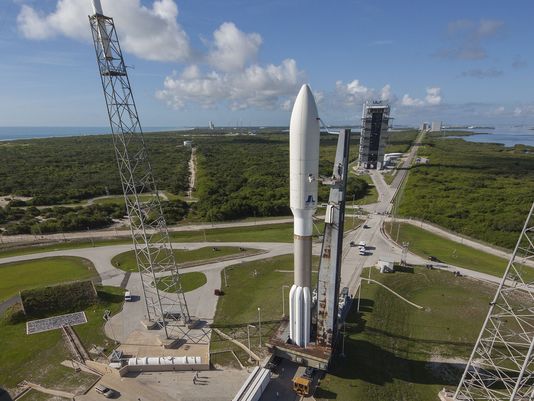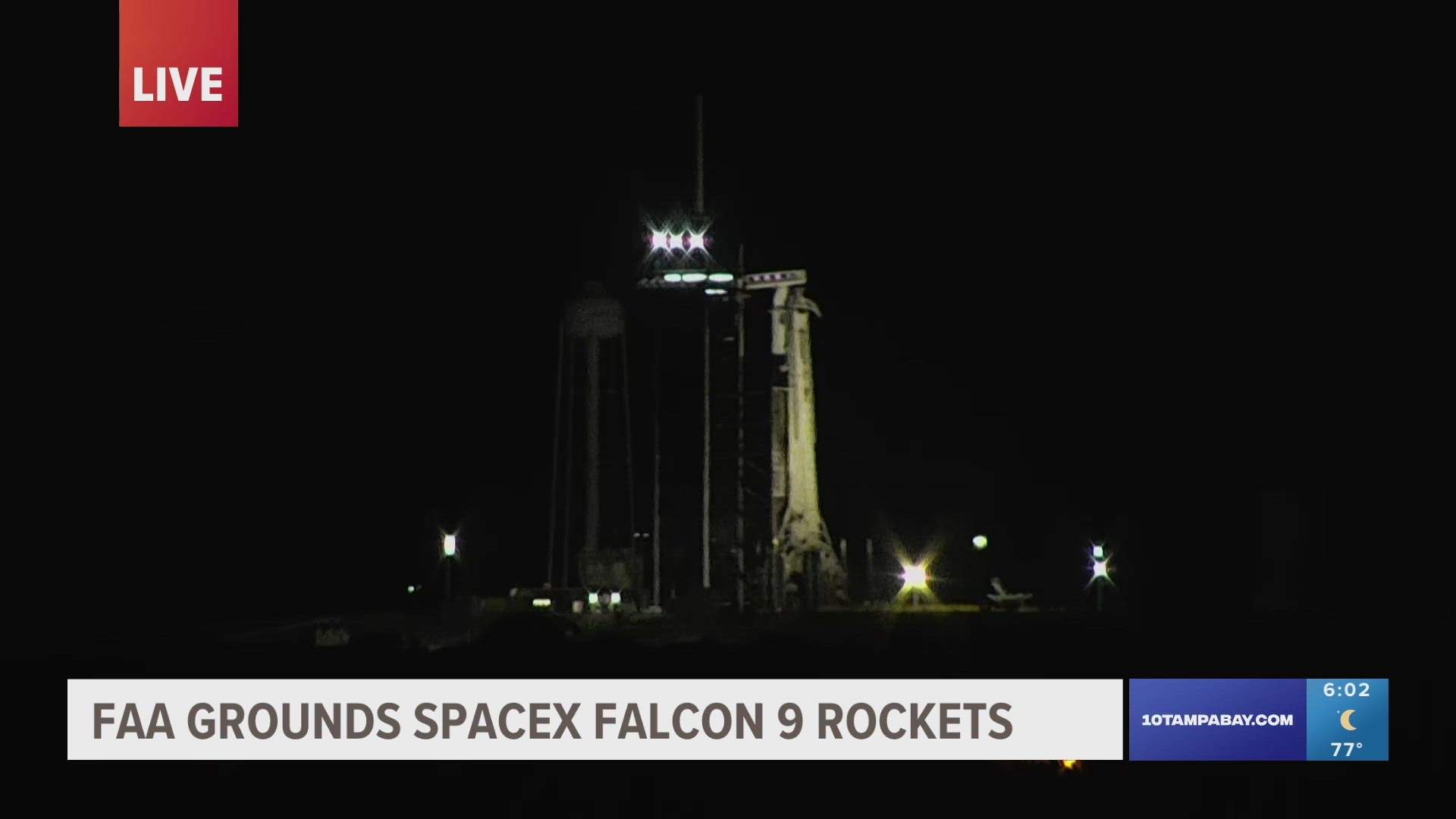CAPE CANAVERAL — United Launch Alliance’s most powerful Atlas V rocket bolted from Cape Canaveral Air Force Station on Friday morning with the last in a series of satellites promising more modern, smartphone-like communications for military forces on the move.
Firing five solid rocket motors alongside its liquid-fueled main engine, the 206-foot rocket lifted off on time at 10:30 a.m. ET with 2.5 million pounds of thrust, trailing a long plume of exhaust as it climbed through blue sky toward a blazing sun.
Atop the rocket as it headed southeast over the Atlantic Ocean was the fifth satellite in the Navy’s $7.7 billion Mobile User Objective System program, or MUOS.
Nearly three hours after launch, the MUOS-5 spacecraft separated from the Atlas V rocket's Centaur upper stage to complete an apparently successful launch.
The program is billed as a military cellphone network in the sky that eventually will allow mobile forces in remote or contested locations, from the open ocean to a dense urban area, to talk and send messages simultaneously, as if using a smartphone.
The system’s full capability, including its tenfold capacity increase over the Navy's existing network, won’t be realized until ground radios complete testing and are fielded widely over the next year or two.
The satellite launched Friday will orbit 22,300 miles over the equator.
Built by Lockheed Martin, the satellite initially will support others forming the military's most used communications network. It will serve as a spare in orbit for the more advanced features offered by its four predecessors, which began launching in 2012.
The mission was the first by ULA's Atlas V rocket in three months. An early shutdown by the rocket's Russian-made RD-180 main engine during a successful March 22 flight prompted an investigation and a minor change to a valve system.
ULA on Twitter
Mission success! ULA's #AtlasV successfully delivers #MUOS-5 for @usairforce and @USNavy http://bit.ly/muos5_launch pic.twitter.com/ufJBKdSjVo
ULA on Twitter
Centaur main engine has been restarted -- this is the 2nd of 3 burns for the upper stage. #AltasV #MUOS-5
Friday's flight was said to be proceeding as planned through the second of three firings by the rocket's Centaur upper stage engine provided by Aerojet Rocketdyne.
The launch was the third from Cape Canaveral in 14 days, a period during which ULA showcased its two biggest rockets.
A heavy-lift Delta IV, the most powerful rocket flying today, launched a U.S. reconnaissance satellite June 11. Four days later, SpaceX’s Falcon 9 put a commercial communications satellite in orbit.
The Eastern Range will take a break until mid-July. SpaceX is targeting a Falcon 9 launch of International Space Station supplies no earlier than July 18. ULA could launch another national security mission on an Atlas V in late July.


